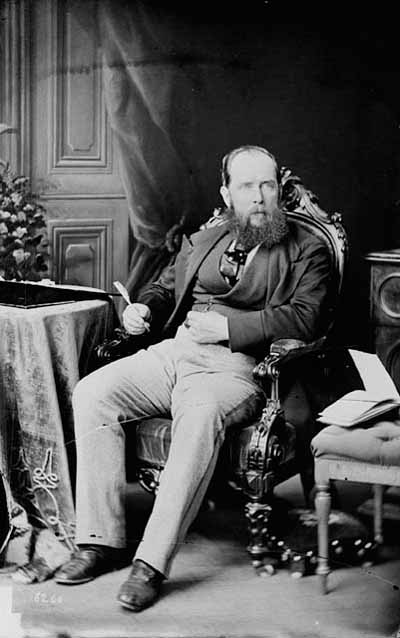Sir Joseph William Trutch National Historic Person (1826-1904)
The Historic Sites and Monuments Board of Canada is reviewing designated national historic persons, events and sites for their connection to the history and legacy of the residential school system. This review responds to the Truth and Reconciliation Commission’s Call to Action 79, which calls on the federal government to commemorate the history and legacy of residential schools.

© William James Topley / Library and Archives Canada / PA-025343
Sir Joseph William Trutch was designated a national historic person in 1975.
The Historic Sites and Monuments Board of Canada reviewed this designation in 2023. The following aspects of Trutch’s contributions to Canadian history were declared of national historic significance.
Reasons for designation
A British-born engineer, surveyor, and politician, holding views on the inferiority of Indigenous Peoples, Trutch came to Victoria in 1859 and made his wealth through construction contracts in the new colony of British Columbia. The most notable of these contracts was for the Alexandra Suspension Bridge. He played an influential role in the early political development of the province of British Columbia, serving as its first lieutenant-governor from 1871 to 1876 and as an advisor to the federal government.
As the colony of British Columbia’s chief commissioner of lands and works from 1864 to 1871, and representing the interests of settler society, he reduced the size of existing First Nations reserve lands, allocated minimal land in new reserves, and denied Aboriginal title. Trutch supported the development of an agricultural settler society in British Columbia. Arguing that First Nations did not use land productively, and holding that Indigenous Peoples should make way for white settlers, he tried to limit the land allotted to First Nations families to 10 acres, while settlers could pre-empt an initial 160 acres. He continued the policy of his predecessor [James Douglas] of not entering into treaties with Indigenous Peoples. As a result of these actions, over time First Nations were denied access to traditional territories and important resources as their lands were occupied by settlers and used for resource extraction without compensation or treaties, leading to a broad range of negative impacts.
As the leading member of a three-person team that negotiated the terms of union with Canada, Trutch was likely responsible for clause 13, which entrenched the parsimonious reserve policy that he had developed. His actions laid the foundations for British Columbia’s Indigenous land policy until the late 20th century – a legacy of litigation and political problems unresolved to this day.
Review of designation
Reviews are undertaken on an ongoing basis to ensure that designations reflect current scholarship, shifts in historical understandings, and a range of voices, perspectives and experiences in Canadian society.
In 2023, this designation was reviewed due to colonial assumptions and an absence of a layer of history in the commemorative plaque text. The original text, approved in 1979, highlighted Trutch’s career in British Columbia as engineer and politician. The original text did not reference his role in reducing First Nations reserve lands and denying Aboriginal title.
New reasons for designation were developed that include Trutch’s policies and their impacts on Indigenous Peoples. No plaque for this designation was ever installed. A new plaque will not be prepared as the limited text of a plaque does not allow for adequately communicating this complex history.
Sources: Historic Sites and Monuments Board of Canada, Minutes, June 2022; December 2022.
The National Program of Historical Commemoration relies on the participation of Canadians in the identification of places, events and persons of national historic significance. Any member of the public can nominate a topic for consideration by the Historic Sites and Monuments Board of Canada.